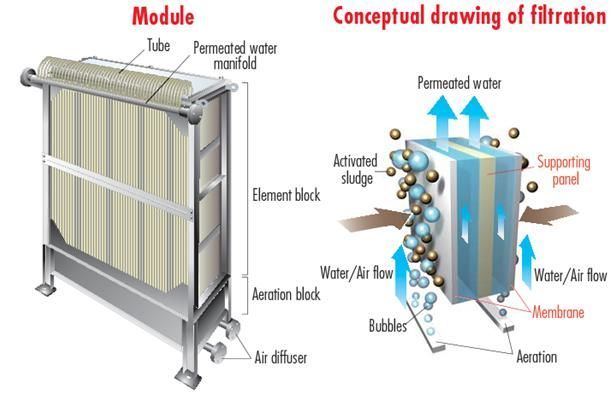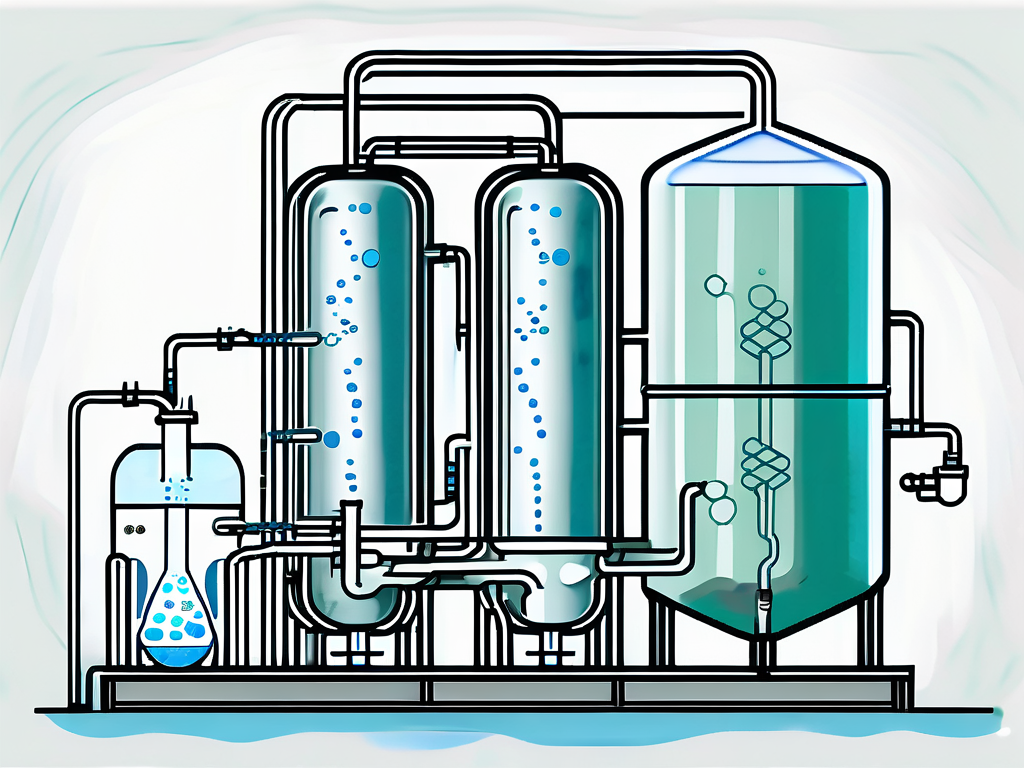The Science Behind Membrane Bioreactor: How It Works and Why It’s Effective
The Science Behind Membrane Bioreactor: How It Works and Why It’s Effective
Blog Article
Exactly How Membrane Layer Bioreactors Are Reinventing Water Purification Solutions
The appearance of membrane layer bioreactors (MBRs) stands for a significant development in the field of water purification, merging biological treatment processes with advanced membrane filtering innovations. As worldwide water shortage heightens, the function of MBRs in assisting in drinkable water reuse and lasting water administration ends up being progressively vital.
Introduction of Membrane Bioreactors
Membrane bioreactors (MBRs) represent a significant innovation in water filtration innovation, as they integrate biological treatment procedures with membrane layer filtering. This combination enhances the efficiency of wastewater therapy by using bacteria to deteriorate organic toxins while concurrently utilizing semi-permeable membranes to different cured water from suspended solids and pathogens.
The MBR system normally contains a biological reactor where the microbial populace metabolizes pollutants, followed by a membrane layer filtering unit that maintains biomass and allows just clean water to pass through. This twin performance results in greater effluent quality contrasted to traditional therapy techniques. MBRs can be operated in both set and continuous circulation modes, supplying versatility in layout and application.
Furthermore, MBRs are characterized by their small footprint, making them appropriate for urban setups with space restrictions. Membrane Bioreactor. They also allow the recuperation of water for reuse, therefore adding to water sustainability efforts. While MBR modern technology has gotten popularity in industrial and local applications, its functional intricacies and energy needs demand cautious factor to consider during application. On the whole, MBRs are at the leading edge of boosting water treatment effectiveness and top quality, showcasing the potential for ingenious remedies in environmental administration.
Advantages of MBR Innovation
The combination of organic therapy with membrane layer purification offers various advantages for water purification processes. One of the main benefits of Membrane layer Bioreactor (MBR) innovation is its capability to effectively get rid of both natural and not natural impurities, leading to top quality effluent. The membranes serve as a physical barrier, stopping suspended solids and microorganisms from going through, which improves the general security and reliability of treated water.
Additionally, MBR systems call for a smaller sized impact compared to traditional treatment methods, permitting extra reliable room use. This small design is particularly useful in city settings where land is limited. MBRs also show operational flexibility, accommodating differing influent high qualities and flow prices without considerable performance degradation.
Moreover, the process provides boosted nutrient elimination capabilities, particularly for nitrogen and phosphorus, which are essential for stopping eutrophication in obtaining waters. The decreased sludge production linked with MBR innovation also converts to reduce disposal costs, making it a cost-efficient option over time - Membrane Bioreactor. On the whole, the advantages of MBR technology setting it as a leading choice for lasting and innovative water filtration systems, addressing both ecological and economic worries
Applications in Water Purification
Applications of Membrane Layer Bioreactor (MBR) technology in water purification are impactful and diverse, resolving various therapy requires across several sectors. MBRs successfully combine biological therapy procedures with membrane filtering, making them ideal for local wastewater therapy, industrial effluent administration, and also potable water reuse efforts.
In metropolitan settings, MBRs are increasingly utilized to improve the top quality of dealt with wastewater, allowing for compliance with stringent discharge policies and assisting in the recycling of water for watering and non-potable usages. Their portable layout additionally makes them suitable for city environments where room is limited.
Industrially, MBR technology is used to treat process moved here water and wastewater, particularly in industries such as food and drink, drugs, and fabrics. By successfully getting rid of impurities and put on hold solids, MBRs assist markets lessen ecological effects while recuperating important resources from wastewater streams.
Furthermore, MBRs are obtaining traction in decentralized water treatment applications, where small systems can be released in remote locations or establishing regions. This adaptability makes it possible for areas to attain lasting water administration solutions, enhancing accessibility to clean water while decreasing reliance on conventional therapy methods.
Study and Success Stories

In another instance, a textile production center in Bangladesh adopted MBR modern technology to address its wastewater challenges. The system lowered chemical oxygen demand (COD) degrees from 1,200 mg/L to less than 100 mg/L, thus satisfying regulatory criteria and considerably minimizing ecological impact.
The College of Cape Town's MBR setup has verified effective in dealing with greywater for non-potable reuse on campus. This job not only saves potable water however additionally serves as an instructional model for lasting practices.
Furthermore, a fish and shellfish handling plant in Norway made use of MBR modern technology to treat effluents having high levels of organic issue, achieving over 90% contaminant elimination. These situation researches underscore MBR innovation's convenience and its important function in boosting water quality across varied applications.
Future of Water Therapy Solutions
As global water shortage and pollution difficulties escalate, innovative water treatment options are coming to be increasingly check my source necessary to make certain sustainable access to clean water. The future of water treatment exists in the assimilation of innovative technologies that enhance the efficiency and efficiency of filtration procedures. Membrane layer bioreactors (MBRs) go to the center of this advancement, incorporating organic therapy with membrane layer filtering to produce premium effluent ideal for numerous applications.

Arising patterns such as resource recovery from wastewater, including nutrients and power, will certainly better change treatment facilities into eco-friendly centers. In addition, innovations in nanotechnology and membrane layer materials promise improved efficiency and durability of filtering systems.

Conclusion
Finally, membrane layer bioreactors represent a substantial improvement in water purification modern technologies, successfully combining organic treatment with innovative membrane layer filtration. The many advantages, consisting of improved effluent top quality and decreased spatial requirements, make MBRs especially suitable for city applications. Their role in safe and clean water reuse and sustainable water administration highlights their significance in resolving global water deficiency challenges. Proceeded r & d will certainly even more boost the efficacy and fostering of MBR modern technology, guaranteeing a resistant future for water treatment options.
The introduction of membrane layer bioreactors (MBRs) stands for a substantial advancement in the field of water purification, merging organic therapy procedures with sophisticated membrane filtration technologies. As worldwide water shortage escalates, the duty of MBRs in facilitating potable water reuse and sustainable water management becomes progressively vital. They likewise allow the healing of water for reuse, therefore adding to water sustainability efforts.As worldwide water shortage and contamination challenges heighten, ingenious water treatment solutions are becoming increasingly essential to ensure lasting accessibility to tidy water. Their function in potable water reuse and sustainable water monitoring highlights their relevance in resolving worldwide water shortage challenges.
Report this page